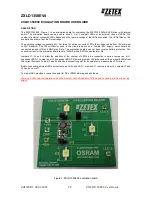
EVGA Z790 CLASSIFIED (121-RL-E798)
- 58 -
RAID LEVELS
There are three main considerations when creating a RAID array: performance, capacity,
and redundancy. Fortunately, each RAID mode offered has unique characteristics that
make choosing one fairly simple, based on your needs.
Performance – Quite simply, which array type is the fastest?
o
RAID0 is considered the best performance option here. The whole
purpose of the array is to combine storage capacity and speed.
o
RAID10 utilizes both mirrors (like RAID1) and a stripe (like RAID0).
This configuration allows it to be faster than RAID1 and RAID5.
o
RAID5 is flexible enough to be a faster all-around type of RAID. Read
speeds are much faster, but write speeds can be slightly slower.
o
RAID1 is designed for redundancy and not speed, so it will usually
operate slightly slower than a single hard drive.
Capacity – How does creating an array affect the size of the logical drive?
o
All RAID levels utilize a very small amount of disk space, in part, to
maintain connections to data across drives and store configuration data.
Additional disk space will be subtracted as a result of formatting.
o
RAID0 = Sum of the drive capacity of all physical drives.
Math – 3x 1TB drives = 3TB RAID0 array.
o
RAID1 = Drive capacity of the data drive
Math – 2x 1TB drives = 1TB RAID1 array.
o
RAID5 = (Number of drives multiplied by drive capacity), subtracted
by the capacity of one drive.
Math – 3x 1TB drives – 1TB = 2TB RAID5 array.
o
RAID10 = Sum of the capacity of the data drives in each mirrored
volume.
Math – 4x 1TB drives = 2TB RAID10
Redundancy – If a drive fails, what happens?
o
RAID1 – Actual redundancy. If one drive fails, all data is backed up on
the second. Install a new drive and the RAID will be repaired again.
o
RAID10 – Actual redundancy. If one drive in a mirrored pair fails, data
can be restored from the other drive. The array can survive losing two
disks, so long as each drive is from a different mirror. The array will
completely fail if both drives from the same mirror fail.
o
RAID5 – Quasi redundancy via parity. If one drive fails, you can still
use the array in a degraded state, until you can replace the drive. The
array cannot survive a second drive failure.
o
RAID0 – No redundancy. If one drive fails, it’s game over.
















































